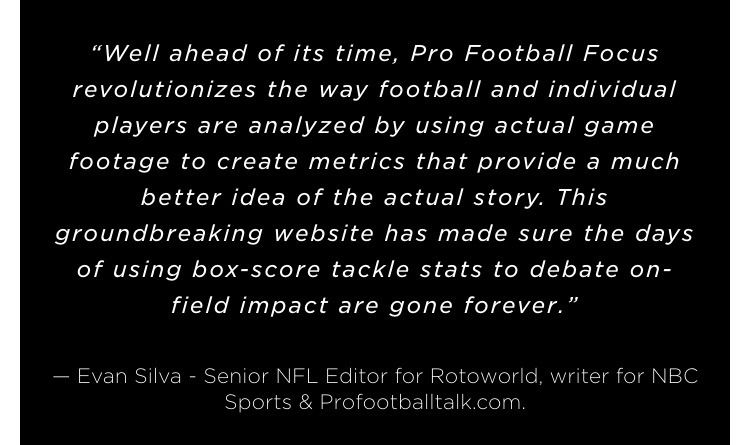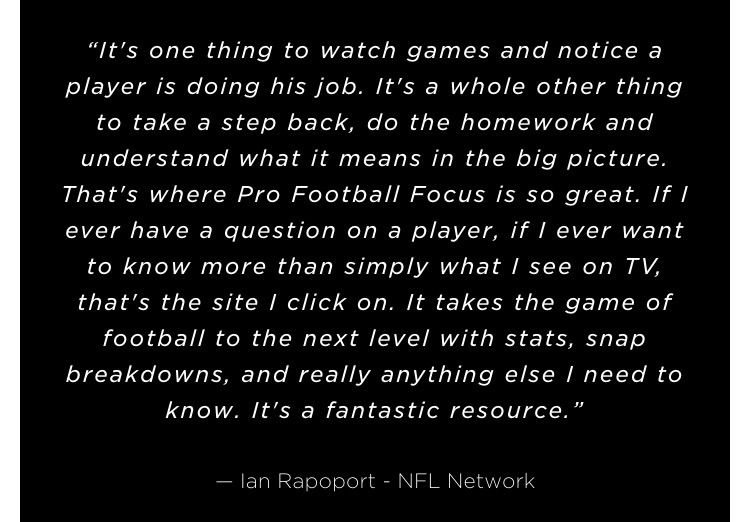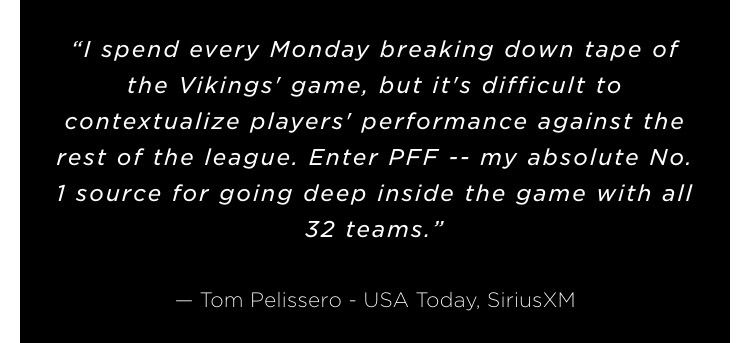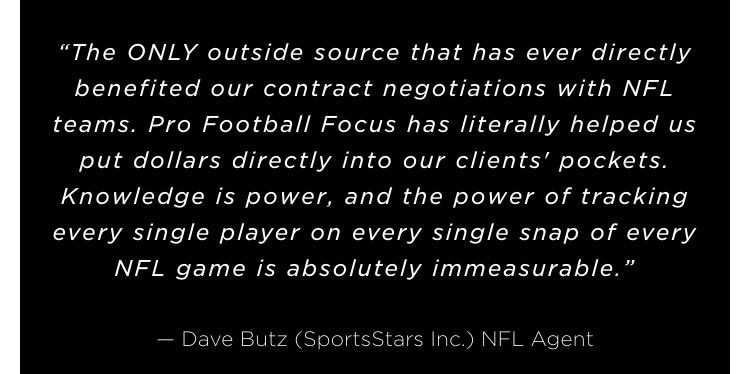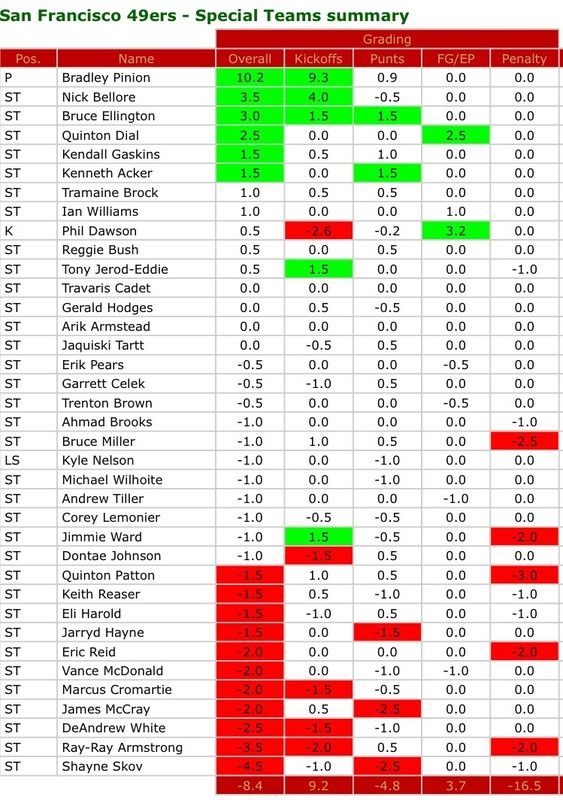Originally posted by Niners99:
Regardless of how qualified people think the scouts are, NFL teams, agents, media outlets, writers, etc. all use it.

I actually think this is a good teachable moment for anyone who wants to interpret PFF's metrics in a productive manner. First Pro football focus is subjective analytics not quantitative analytics, so people who use it saying that they're showing facts are misleading people about what PFF is actually suggesting. As a former subscriber with access to gamepass I took a look at some of the players that they graded positively, and noticed it was more specific types of plays leading to green grades rather than the numerous plays and techniques that contribute to winning.
Now the player grading can lead to an interesting discussion, however it's important to remember the pitfalls of such a type of analysis, and I can't think of a better example than the last person in your block of testimonials Alterraun Verner. After the 2013 season Alterraun Verner and Aqib Talib were 2 of the hottest corners heading into Free Agency. Verner had a robust PFF grade of around +20 and the website championed him as an elite FA, whereas Talib had a slightly negative overall grade if I recall correctly, and PFF had him as a buyer beware.
What happened in free agency is that Talib got a larger contract despite being several years older and has subsequently been to 2 pro bowls, whereas Verner has lost his starting spot and will likely be cut at the end of the season. So what happened? What did PFF miss in their analysis? Well to put it simply Verner played a limited style of coverage nostly in a bail technique which dropped him at a 45 degree angle and essentially helped him pin receivers to the sideline limiting the types of throws that would come into what PFF deemed his coverage area. If a receiver cut his route short he'd be in the zone of the LB in the flat, or if he cut his route to the middle he'd be in the zone of the dropping LB and safety. So while Verner showed a lot of success in his role he was being shielded by a Titans defense that wasn't very good at the time. He rarely had to display press skills, zone skills, or man coverage skills across the field. He also had far easier matchups during the season than the Titans #1 corner at the time Jason McCourty. Talib on the other hand shadowed #1 wideouts and even TE's across the field with single high safety coverage the majority of the time, which is a more difficult assignment. Coaches noticed this and he got the contract that his skillset warranted, and interest was more tepid with Verner.
Pro Football Focus ultimately is a team of analysts trained over a weekend (by Sam Monson who has no football background) on what constitutes a good/bad football play. With the way they attempt to turnover grades in such a short window they're not contextualizing grades, they're not talking about assignments, matchups, situations, techniques, ect. It's basically pretty much like any other stat. It's why someone like Bill Belichick has come out saying that he finds analytics websites to be unusable and that they need to be taken with an enormous grain of salt.
Even the distribution of player grades by age even leads to some questioning.
http://socalledfantasyexperts.com/aging-curve-nfl-defensive-players-dl-lb-db/
PFF's aggregate data would suggest that most defensive players peak by or before 25. This is counter intuitive since most would consider 27-28 to be the peak years because it best meshes physical prime with experience. One possible explanation is that rookies and younger players are playing a more limited, protected role which fits their skillset in a manner that can get immediate contributions, whereas older players are getting more difficult assignments like a corner playing man coverage without safety help, or a DE with one usable pass rushing lane that also needs to jam the TE off the LOS, or the MLB who has to take a deep zone drop in coverage.
PFF is fine, it can help us learn about other teams, and even help us confirm something like 'Aaron Lynch was really disruptive today, did PFF see the same thing?'. However, it shouldn't be taken to the nth degree like Ncommand and others are taking it to. The team isn't sitting on 18 or 19 quality starters, or else they'd actually be a good team not a 4-11 team with a -10 point differential per game. It's fun, it's a highly readable and presentable piece of information worth sharing, but it shouldn't be taken as the ultimate catch all as to the performance of players on the team.
[ Edited by McClusky on Dec 30, 2015 at 5:40 AM ]
